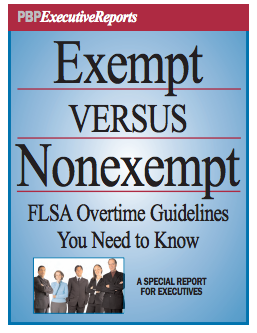
Ebook
Exempt versus Nonexempt: FLSA Overtime Guidelines You Need to Know
Get Your Ebook Now
But the part that’s most complicated – and most misunderstood – is the section detailing the rules on how employers must categorize employees for the purpose of deciding who’s eligible for overtime pay – called “nonexempt” employees – and who isn’t – called “exempt” employees. A survey of employers by one Washington, DC-based law firm revealed that a majority of employers were unknowingly in violation of some parts of the FLSA. Of course, the real problem occurs when an employee believes that misclassification under FLSA is more than a “mistake” – that the employer is purposely skirting the law. Then you’re dealing with a lawsuit and a possible Department of Labor audit. Of course you want to avoid all that, especially because: Violations are expensive. A pay error of a few hundred dollars could mushroom into thousands of dollars in legal fees and penalties – which could have been avoided with proper procedure in the first place. The law, and each employer, is under a microscope. When the FLSA was passed, labor groups charged that it was too business-friendly, so the government takes every opportunity to prove it goes tough on violators.
The basics of FLSA.
The “primary duties” test for employees who are exempt from overtime.
Categories of exemptions.